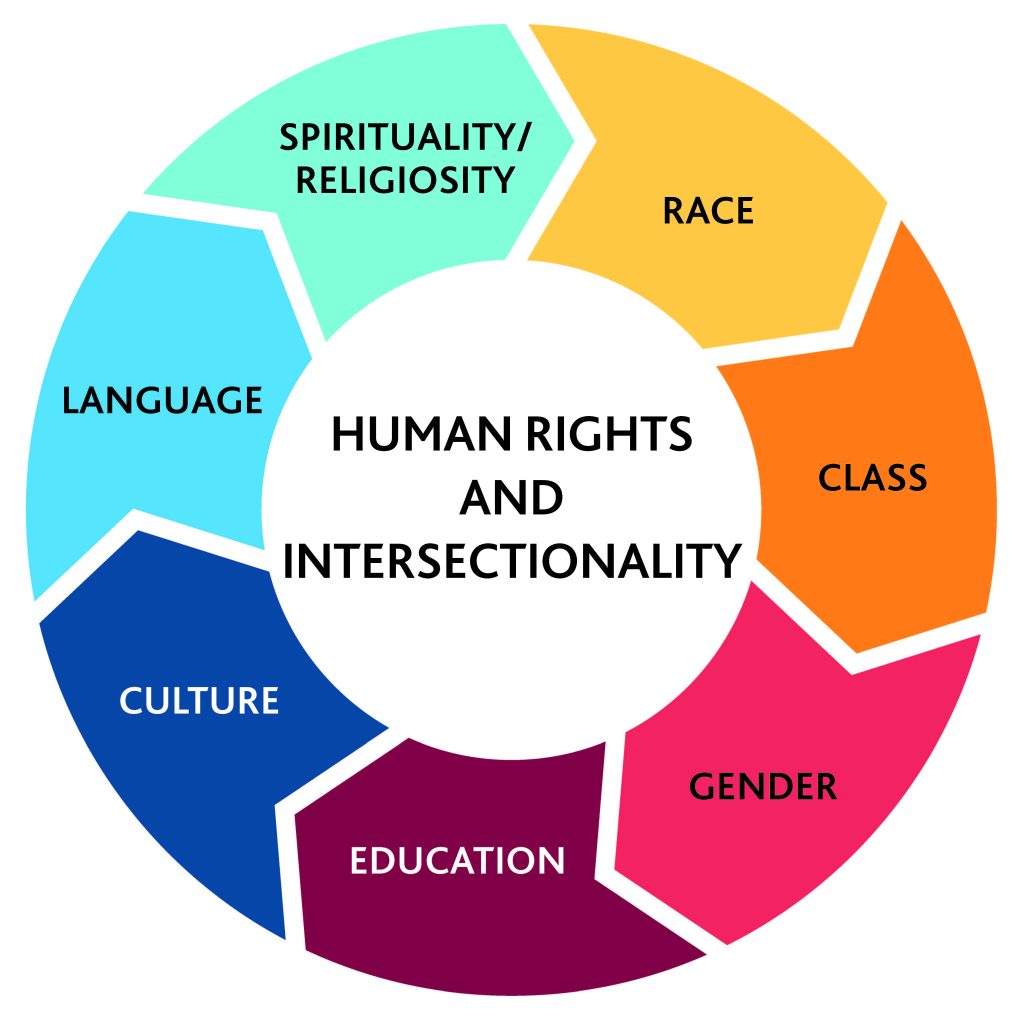Section 5: Intersectionality and Human Rights Curriculum Design Model
“Mandela Global Human Rights: Peace, Reconciliation and Responsibility: A Teacher Guide and Lessons for Educators,” and the TNM Curriculum Project is not limited to the concept of ARCC, Project lead, Dolana Mogadime believes there are many other design models that can be used alongside ARCC in a parallel manner. One such important curriculum design model is Intersectionality and Human Rights. Several lessons are planned with the parallel curriculum design model approach in mind, that aim to give value to both. Given the notion of “intersectionality” (Crenshaw, 1989, p. 140; 1991, p. 1244) is borne out of Black women’s experiences facing multiple oppressions, and their human rights work on the ground in community action groups and organizations, it is important to give recognition and value to both.
TNM’s Ubuntu Epistemology would not be complete without recognizing the role of Black women in our curriculum design models. In fact, the inclusion of multiple curriculum design models, makes room for acknowledging the contribution of our foremothers, as such has a respectful place in the multiple curriculum design model approach that we utilize. The curriculum design model, “Intersectionality and Human Rights,” has been developed by Dr. Dolana Mogadime, in order to both honour and acknowledge the courageous work of women who exerted agency in the history of the antiapartheid movement. ‘Intersectionality and Human Rights’ are entangled and can also be conveyed as ‘Human Rights and Intersectionality’ due to their interconnectedness.
Human Rights and Intersectionality
Building awareness on how systematic oppression operates simultaneously is central to learning about Black women’s experiences. The social analysis about intersectionality has been one of Black women’s major contributions to excavating how inequality is not only situated in one social category but occurs within many contexts. It is important for learners to have knowledge about how intersectionality and the advancement of human rights is a direct result of Black women’s lived experiences and activism on the ground in community groups and organizations.
In the lessons that span over 10 days, entitled, “Recognizing Canadian Heroes”: Caroline Goodie Tshabalala Mogadime, Oral history accounts and Self-Representation about a South African Woman’s Contributions to the Anti-Apartheid Movement in Canada, intersectionality is central to understanding the realities of a Black woman. The Oral History Inquiry: 10-Step Approach assists students in gaining a better understanding about the connection between the individual, civic action, and solidarity movements for social change. Oral histories are a vehicle for raising the voices of individuals and communities – they provide the missing voices and gaps when examining a time period in history. African (Black) women’s role, and agency isn’t often understood well enough, oral history attempts to fill that gap.
Intersectionality and the Human Rights Defender
- Section 5 was developed by Dr. Dolana Mogadime, Ph.D., Professor, Brock University. ↵



